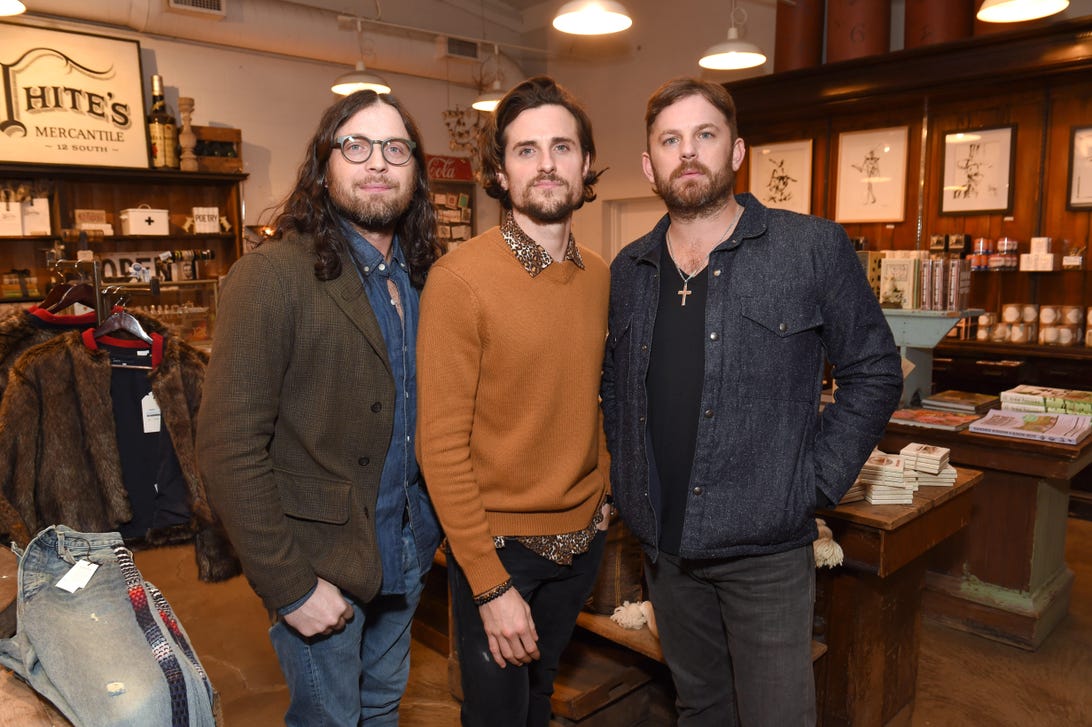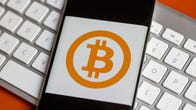NFT art could be the thing to give this holiday season.
Getty Images
It’s the holidays and that means people are buying gifts. A new option for this season are NFTs, or nonfungible tokens. These digital tokens tied to digital assets such as a video highlight, a meme or a tweet may (or may not) be able to make someone a lot of money in the future (more below).
In short, NFTs offer a blockchain-created certificate of authenticity for a digital asset or piece of art. You’ll find them everywhere from the NFL to Twitter and Variety.
If this doesn’t make much sense to you, it’s OK. We’ll break down what the heck NFTs really are and how you can sell them (a 12-year old is on track to make $400,000 from NFTs). And we’ll explain everything you need to know about scams and blockchain before buying.
What’s an NFT?
This is the part that takes a bit of open-mindedness. An NFT is a unique digital token, with most using the Ethereum blockchain to digitally record transactions. It’s not a cryptocurrency like bitcoin or ether, because those are fungible — exchangeable for another bitcoin or cash. NFTs are recorded in a digital ledger in the same way as cryptocurrency, so there’s a listing of who owns each one.
What makes an NFT unique is the digital asset tied to the token. This can be an image, video, tweet or piece of music that’s uploaded to a marketplace, which creates the NFT to be sold.
What kind of NFTs can I buy?
NFTs can be tied to any digital asset. Anything you see online can be an NFT — music, social media posts, clip art and more. Here are some of the latest nifty NFTs we found.
MLB x Topps
Major League Baseball is celebrating the 70th anniversary of Topps’ first set of baseball cards. The company recently launched new and classic baseball card designs of popular players as NFTs. Collectors can choose from standard or premium packs that will have eight cards each. The NFTs are available on ToppsNFTs.com.
TikTok Moments
The latest big news in NFTs is TikTok’s new video collection called TikTok Moments. The videos will celebrate the impact that artists have on TikTok. Proceeds from the collection will go to NFT artists and creators. The first collection will start with Lil Nas X and be available starting Oct. 6 on the Etherum.
Fortune
And Fortune gave its readers a chance to get in on the NFT craze. The company sold 256 copies of the limited edition cover from the graphic artist Pplpleasr for Fortune’s August/September magazine on OpenSea. The copies sold out within five minutes starting at 1 Etherum (estimated $3,000). But the NFTs were available for resale at three times the cost.
Sorare digital trading cards
But NFTs go beyond artists and music. Sorare released its “Super Rare” Lionel Messi digital trading card that’s currently bidding at €29,992.75, equivalating to over $35,000. Sorare also announced that it raised $680 million for its next-level sports fantasy game. The funding is currently led by SoftBank.
Tiger Woods’ Autograph collectibles
And in sports, Tiger Woods is currently selling thousands of digital collectibles on Autograph on the DraftKings marketplace. The collection starts at $250. Naomi Osaka, Derek Jeter and Tonk Hawk are also releasing digital collectibles on Autograph, which is co-founded by Tom Brady.
As the hype for NFTs grows, expect more digital assets to come up for sale and bring in some big money.
Where can I buy and sell NFTs?
While you may not want to jump right in bidding six figures, there are multiple NFT marketplaces out there to check out, with Opensea being the biggest. Buyers can search for art, domain names and random collectibles to bid on without having to break the bank. And Woods’ digital collection is one of the many NFT collections available on DraftKings marketplace, including Tony Hawk, Simone Biles and other athletes.
And Christie’s recently auctioned Curio Cards, a set of 31 NFTs, for $1.2 million. Christie’s pointed out that the Curio Cards are the oldest pieces of art on the Etherum. The collection, Post-War to Present: The NFTs, was auctioned off on Oct. 1.
On the other hand, if you want to sell an NFT of your art, you can use NFTify, the Shopify NFT store, to sell NFTs without creating your own store. You’ll also need a MetaMask account to get going. And Burberry recently announced a partnership with Mythical Games to gamify buying, selling and collecting toys as NFTs through the Blankos Block Party game. CNET’s own Chris Parker also made a step-by-step guide on how to make and sell your own NFT, in the video below.
If I have an NFT, do I own the asset?
Nope.
That’s the real kicker to understanding the whole concept. The person who buys the NFT doesn’t own the actual asset.
“NFTs challenge the idea of ownership: digital files can be reproduced infinitely and you do not (usually) buy the copyright or a license when purchasing an NFT,” said Jeffrey Thompson, associate professor at the Stevens Institute of Technology in Hoboken, New Jersey.

The band Kings of Leon sold its latest album via NFTs and made more than $2 million from the sales.
Getty Images
For example, the creator of the Nyan Cat meme sold an NFT of it for $590,000. The person who bought the token owns the token but doesn’t actually own the meme. That still belongs to the creator, who held onto intellectual and creative rights.
What the owner of the token has is a record and a hash code showing ownership of the unique token associated with the particular digital asset. People might download Nyan Cat and use it on social media if they want, but they won’t own the token. This also means they can’t sell the token as the owner can.
Why are NFTs so expensive?
As with physical collectibles such as Beanie Babies, baseball cards and toys, there’s a market for NFTs. The buyers tend to be tech-savvy individuals who understand the idea of wanting to purchase digital goods and likely made a killing this past year with cryptocurrencies. Ether, for example, went from just over almost $800 in Januaary to a current price of about $4,100. In some cases, buyers are just flexing their digital wallets to show off how much crypto they have, but for others, there’s a deeper interest.
“Specifically for art-related NFTs, there is a huge surge in demand due to their novelty and creativity of early artists,” Jason Lau, chief operating officer of crypto exchange OKCoin, said in an email. “Whether it’s a physical work with an attached NFT (think of it as a digital autograph and proof of veracity), or an entirely digital work (where the NFT is the art), this new medium is opening new ways for collectors and artists to explore their relationship with the artwork itself.”
It’s also great for the artists, says Lau. By selling digital art directly to those interested, an artist can begin monetizing work without having to try to sell it in a gallery.
What are the pitfalls of NFTs?
A drawback is the hundreds of dollars in fees required to create an NFT. If you’re making your own token on the Ethereum blockchain, you need to use some ether, which as mentioned earlier is kind of pricey. Then after you make an NFT, there’s a “gas” fee that pays for the work that goes into handling the transaction and that’s also based on the price of ether. Marketplaces simplify the process by handling everything for a fee when an NFT is sold.
There’s also an environmental cost. Like bitcoin, ether requires computers to handle the computations, known as “mining,” and those computer tasks require a lot of energy. An analysis from Cambridge University found that mining for Bitcoin consumed more energy than the entire country of Argentina. Ether is second to bitcoin in popularity, and its power consumption is on the rise and comparable to the amount of energy used by Libya.
On top of all of this, NFT scammers are on the rise. Vice reported that the “Evolved Apes” NFT seller got away with millions of dollars after promising a collection 10,000 of NFTs. The tokens were available for public sale last month but the social media page and website randomly disappeared. Buyers did not receive their NFTs. Vice reported that the seller left clues on Etherscan that they got away with over $2.7M. This is one of many NFT scams that are costing buyers a fortune.
Credit: Source link


















 Bitcoin
Bitcoin  Ethereum
Ethereum  Tether
Tether  Solana
Solana  XRP
XRP  Dogecoin
Dogecoin  USDC
USDC  Cardano
Cardano  Lido Staked Ether
Lido Staked Ether  TRON
TRON  Avalanche
Avalanche  Toncoin
Toncoin  Shiba Inu
Shiba Inu  Wrapped stETH
Wrapped stETH  Stellar
Stellar  Wrapped Bitcoin
Wrapped Bitcoin  Polkadot
Polkadot  Chainlink
Chainlink  Bitcoin Cash
Bitcoin Cash  WETH
WETH  Sui
Sui  Pepe
Pepe  LEO Token
LEO Token  NEAR Protocol
NEAR Protocol  Litecoin
Litecoin  Aptos
Aptos  Uniswap
Uniswap  Wrapped eETH
Wrapped eETH  Hedera
Hedera  Cronos
Cronos  Internet Computer
Internet Computer  USDS
USDS  POL (ex-MATIC)
POL (ex-MATIC)  Ethereum Classic
Ethereum Classic  Render
Render  Ethena USDe
Ethena USDe  Bittensor
Bittensor  Artificial Superintelligence Alliance
Artificial Superintelligence Alliance  Bonk
Bonk  WhiteBIT Coin
WhiteBIT Coin  Arbitrum
Arbitrum  Dai
Dai  MANTRA
MANTRA  Filecoin
Filecoin  dogwifhat
dogwifhat  Cosmos Hub
Cosmos Hub  OKB
OKB